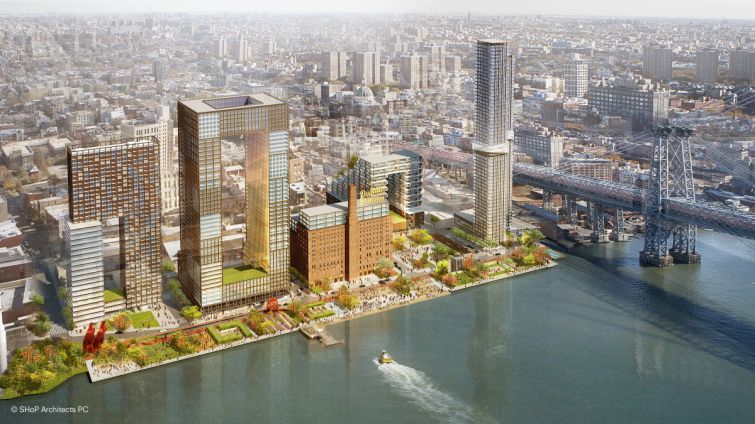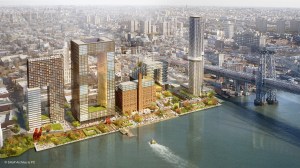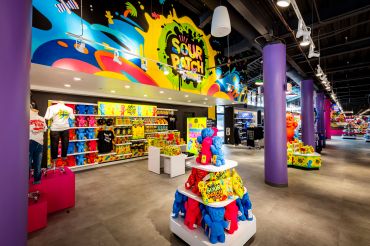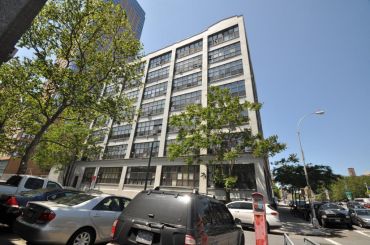Two Trees’ Jed Walentas Talks Domino Sugar Plans at Brooklyn Real Estate Summit
By Billy Gray May 10, 2013 2:21 pm
reprints
The new Domino Sugar refinery will redefine the skyline of Williamsburg’s southside and potentially create 3,000 new jobs in the residential area, but its retail tenants will hew closely the neighborhood’s famed (and, at times, mocked) indie mindset, Two Trees Management Company Principal Jed Walentas told a crowd yesterday at the Brooklyn Academy of Music.
Two Trees, which helped make Dumbo what it is today, will stress “small-scale independent” retail at the project. One slide in a Power Point presentation of the Domino site presented by Mr. Walentas had “No Big Box” spelled out in big letters. Two Trees is aiming for dynamic merchants that will increase the all-hours livelihood of the area. “If you build more Duane Reades,” Mr. Walentas said, “you’ll only bring in people who need to buy toothpaste.”
Mr. Walentas presented the firm’s designs on the Domino campus during his keynote address to a packed auditorium at the 2013 Brooklyn Real Estate Summit. Wearing jeans and a checkered shirt as he addressed a roomful of suits, Mr. Walentas spoke and answered questions for 45 minutes. Two Trees in March released bold renderings of their plan for the 11-acre Domino expanse, whose signature refinery building will remain in place (with a three story addition on the roof) and be flanked by four new buildings, the tallest of which will rise 598 feet. Mr. Walentas conceded that the lanky new buildings would “never…feel contextual” on the low-lying southside Williamsburg waterfront, but otherwise went to great lengths to assuage fears of overdevelopment. 
In fact, Mr. Walentas took several swipes at the northern portion of the Williamsburg waterfront, where architecturally undistinguished high-rises have, to many, marred the landscape. He referred to that district’s “segregated” low-rise affordable housing options and referred to the “huge urban challenge” Two Trees will meet with their “socially contextual” 660 affordable units. He mentioned discussing improved neighborhood schools with “white hipster parents and old school Hispanic families.”
Still, Mr. Walentas admitted that “before we got involved in this I hadn’t spent a ton of time in Williamsburg. I don’t hang out in Williamsburg. And I don’t have a conception so much of such a difference between North and South Williamsburg.”
The Two Trees plan will also ensure that the waterfront is open to the public. When by the East River, “people shouldn’t feel as if they’re standing in someone’s front yard,” Mr. Walentas said. He noted that programming would be “somewhat limited” given the narrow dimensions of the waterfront park, but that festivals, movie screenings and flea markets could take place in a larger side park just off the river. The current project blueprint calls for 60 percent more open space–a total two acres–than an earlier plan. (He mentioned talks with a company that could put a floating pool in the East River, but when I asked how far along that prospect was, he said “it’s not.”
While locals could benefit from the increased parkland in the post-industrial neighborhood, the biggest impact the Domino project will have on southside Williamsburg is its increased office space, which became much more prominent in the latest plan. There will be a whopping 631,240 square feet of commercial office space between the four buildings, and Mr. Walentas said the development should bring 3,000 new jobs to the area.
While Two Trees and Mr. Walentas seem commendably honest in their efforts to improve rather than dismantle the existing area, he did say that the developer is “trying to change the flavor of the neighborhood.” In terms of commercial space, he said, Brooklyn is “way, way, way underbuilt” and that Williamsburg, in particular, is “overflowing with human capital” suited to entrepreneurial businesses .
Mr. Walentas said the project would take 15 years to complete, cost $1.5 billion and break ground sometime next year.


